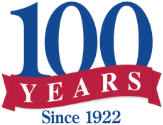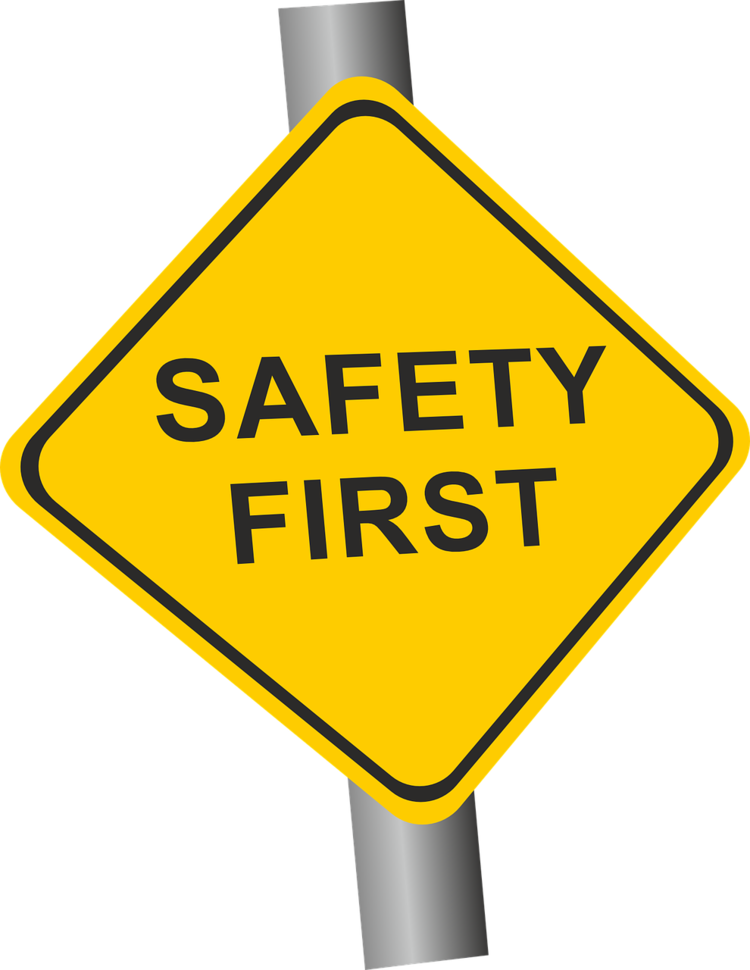
One of the safest choices drivers and passengers can make is to buckle up. Many Americans understand the lifesaving value of the seat belt – the national use rate was at 90.3% in 2020. Seat belt use in passenger vehicles saved an estimated 14,955 lives in 2017. Understand the potentially fatal consequences of not wearing a seat belt and learn what you can do to make sure you and your family are properly buckled up every time.
Consequences
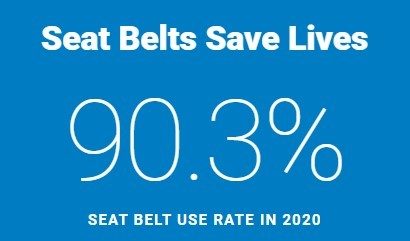
Of the 22,215 passenger vehicle occupants killed in 2019, 47% were not wearing seat belts.
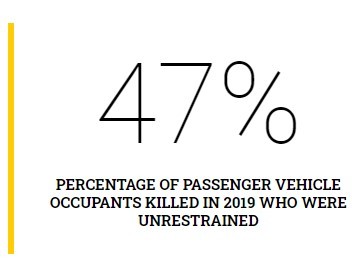
Seat belts saved an estimated 14,955 lives and could have saved an additional 2,549 people if they had been wearing seat belts, in 2017 alone.
The consequences of not wearing, or improperly wearing, a seat belt are clear:
- TRAFFIC SAFETY FACTS: SEAT BELT USE IN 2020
1. Buckling up helps keep you safe and secure inside your vehicle, whereas not buckling up can result in being totally ejected from the vehicle in a crash, which is almost always deadly.
2. Air bags are not enough to protect you; in fact, the force of an air bag can seriously injure or even kill you if you’re not buckled up.
3. Improperly wearing a seat belt, such as putting the strap below your arm, puts you and your children at risk in a crash.
The benefits of buckling up are equally clear:
- If you buckle up in the front seat of a passenger car, you can reduce your risk of:
- Fatal injury by 45% (Kahane, 2015)
- Moderate to critical injury by 50%
- If you buckle up in a light truck, you can reduce your risk of:
- Fatal injury by 60% (Kahane, 2015)
- Moderate to critical injury by 65% (NHTSA, 1984)
Seat Belt Safety for Adults
Follow these seat belt tips and guidelines, including do’s and don’ts when you’re pregnant. Then have some fun quizzing yourself about the myths and facts of buckling up, and test your seat belt IQ.
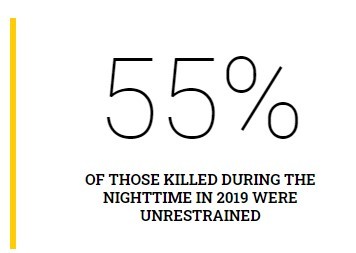
The Top 5 Things You Should Know About Buckling Up
55% OF THOSE KILLED DURING THE NIGHTTIME IN 2019 WERE UNRESTRAINED
1. Buckling up is the single most effective thing you can do to protect yourself in a crash
Seat belts are the best defense against impaired, aggressive, and distracted drivers. Being buckled up during a crash helps keep you safe and secure inside your vehicle; being completely ejected from a vehicle is almost always deadly.
2. Air bags are designed to work with seat belts, not replace them
If you don’t wear your seat belt, you could be thrown into a rapidly opening frontal air bag. Such force could injure or even kill you. Learn about air bag safety.
3. Guidelines to buckle up safely
- The lap belt and shoulder belt are secured across the pelvis and rib cage, which are better able to withstand crash forces than other parts of your body.
- Place the shoulder belt across the middle of your chest and away from your neck.
- The lap belt rests across your hips, not your stomach.
- NEVER put the shoulder belt behind your back or under an arm.
4. Fit matters
- Before you buy a new car, check to see that its seat belts are a good fit for you.
- Ask your dealer about seat belt adjusters, which can help you get the best fit.
- If you need a roomier belt, contact your vehicle manufacturer to obtain seat belt extenders.
- If you drive an older or classic car with lap belts only, check with your vehicle manufacturer about how to retrofit your car with today’s safer lap/shoulder belts.
5. Seat belt safety for children and pregnant women
Find out when your child is ready to use an adult seat belt and learn about seat belt safety when you’re pregnant.
Download file (courtesy NHTSA): If You're Pregnant: Seat Belt Recommendations for Drivers and Passengers
If you’re pregnant, make sure you know how to position your seat and wear a seat belt to maximize your safety and the safety of your unborn child. Read our recommendations below or view the instructional diagram version of our seat belt recommendations for pregnant drivers and passengers (PDF 497 KB).
Source: National Highway Traffic Safety Administration page on Seat Belts

